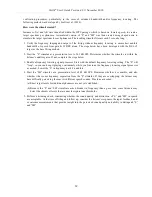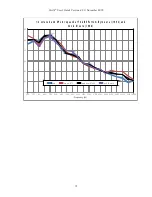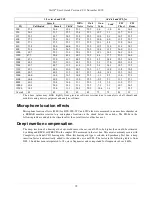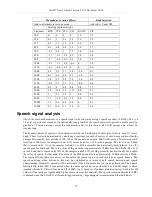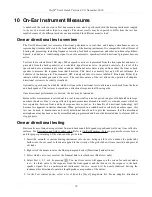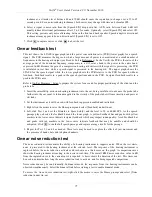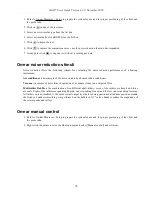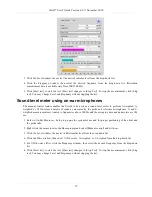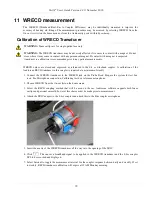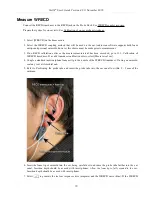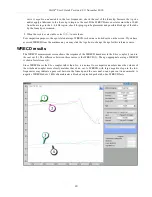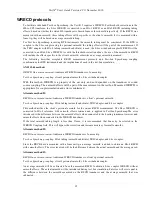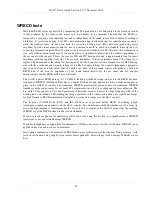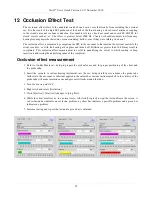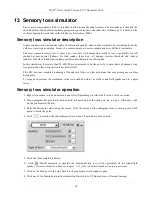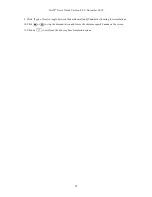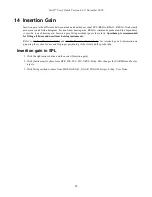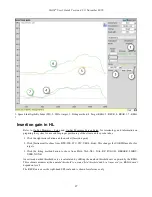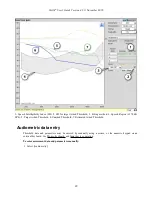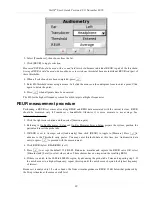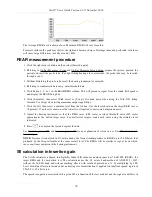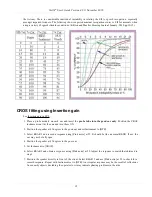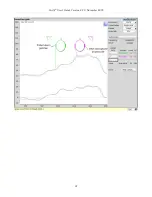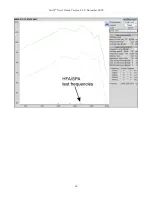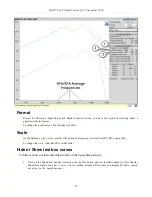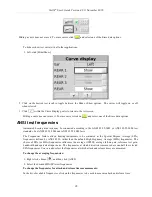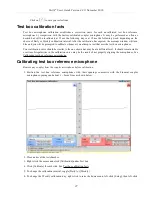
Verifit
®
User's Guide Version 4.8
©
November 2016
WRECD facts
Individual RECD values are derived by comparing the SPL produced by a sound source in the closed ear canal
to that produced by the same sound source in a 2cc coupler. It is commonly assumed that the RECD so
measured is a property of the individual ear and is independent of the sound source used to obtain it, making it
useful for (1) correcting hearing level (HL) data measured using insert earphones for individual ear acoustics
when the standard foam tip has been used (2) correcting hearing level (HL) data measured using insert
earphones for individual acoustics and the use of a custom earmold in place of a standard foam tip, and (3)
converting measured coupler SPL in Test box mode to estimated occluded ear SPL. However, this assumption is
true, only if the acoustic impedance of the sound source is significantly higher than the acoustic impedance of
the ear canal or the coupler. This is the case for ITE and ITC hearing aids and is approximately true for insert
earphones with the supplied foam tips. The acoustic impedance of insert earphones drops if the foam tip is
replaced by an earmold or the tubing that forms part of the HA-2 coupler. At some frequencies, for BTE hearing
aids with their earhooks and earmold tubing (or the HA-2 coupler tubing), the acoustic impedance approaches
that of an adult ear and falls below that of a child's ear. Each of these sound sources will produce a different
RECD and, if the acoustic impedance of the sound source differs for the ear canal and 2cc coupler
measurements, further RECD differences will result.
The Verifit requires RECD data up to 12.5 kHz to facilitate wideband testing, and as a result RECD has been
renamed to WRECD (Wideband Real Ear to Coupler Difference) and utilizes the 0.4cc wideband coupler in
place of the ANSI 2cc coupler. The Audioscan WRECD measurement protocol uses the Audioscan WRECD
transducer as the sound source for ear canal SPL measurement and the 0.4cc wideband coupler calibration. The
use of the 0.4cc coupler in Test box Speechmap is desirable because it raises the high frequency SPL of the
hearing aid by more than 20 dB, making the rising noise floor of the coupler microphone less significant. Its use
for high frequency RECD measurement is desirable because of resonances in the HA-1 coupler.
The revisions of ANSI S3.46 (2013) and IEC 61669 (now in process) define RECD as utilizing a high
impedance coupled sound source and the HA-1 coupler. The Audioscan wideband transducer with a foam tip
meets the high impedance requirement but the use of the 0.4cc coupler in the Verifit 2 means that the resulting
WRECD is not the RECD defined in the revised standards.
If you use insert ear phones for audiometry OR if you verify using the test box, you should measure WRECD
(preferred) or use age-related average WRECD.
If you use headphones or sound field for audiometry AND you use on-ear tests for verification, WRECD is not
applied in any way and need not be measured.
Insert phone audiometry with measured WRECD and on-ear verification provides the best fitting accuracy, with
test box verification being slightly less accurate. Insert phone HL data with age-related average WRECD is next
best.
82
Summary of Contents for verifit
Page 1: ...Audioscan Verifit User s Guide 4 8 November 2016...
Page 17: ...Verifit User s Guide Version 4 8 November 2016 EC Declaration of Conformity 17...
Page 92: ...Verifit User s Guide Version 4 8 November 2016 92...
Page 94: ...Verifit User s Guide Version 4 8 November 2016 94...
Page 107: ...Verifit User s Guide Version 4 8 November 2016 Telecoil test results 107...
Page 123: ...Verifit User s Guide Version 4 8 November 2016 123...
Page 148: ...Verifit User s Guide Version 4 8 November 2016 148...
Page 149: ...Verifit User s Guide Version 4 8 November 2016 149...
Page 159: ...Verifit User s Guide Version 4 8 November 2016 159...

